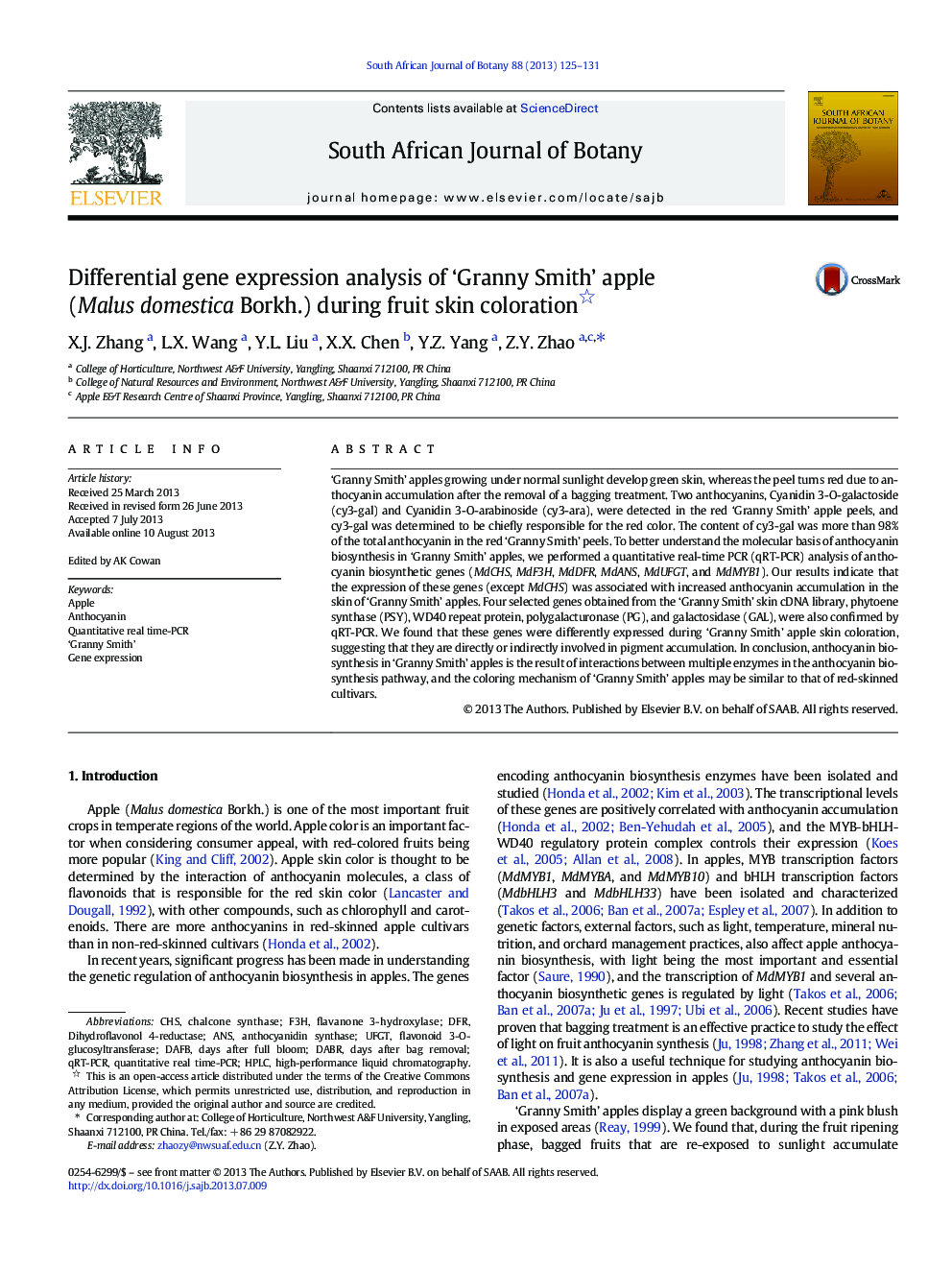| Article ID | Journal | Published Year | Pages | File Type |
|---|---|---|---|---|
| 6379078 | South African Journal of Botany | 2013 | 7 Pages |
â¢Cy3-gal was the most abundant anthocyanin in 'Granny Smith' apple.â¢Expressions of ten color-related genes were characterized in 'Granny Smith' apple.â¢Anthocyanin accumulation in apple is the result of interactions of multiple enzymes.
'Granny Smith' apples growing under normal sunlight develop green skin, whereas the peel turns red due to anthocyanin accumulation after the removal of a bagging treatment. Two anthocyanins, Cyanidin 3-O-galactoside (cy3-gal) and Cyanidin 3-O-arabinoside (cy3-ara), were detected in the red 'Granny Smith' apple peels, and cy3-gal was determined to be chiefly responsible for the red color. The content of cy3-gal was more than 98% of the total anthocyanin in the red 'Granny Smith' peels. To better understand the molecular basis of anthocyanin biosynthesis in 'Granny Smith' apples, we performed a quantitative real-time PCR (qRT-PCR) analysis of anthocyanin biosynthetic genes (MdCHS, MdF3H, MdDFR, MdANS, MdUFGT, and MdMYB1). Our results indicate that the expression of these genes (except MdCHS) was associated with increased anthocyanin accumulation in the skin of 'Granny Smith' apples. Four selected genes obtained from the 'Granny Smith' skin cDNA library, phytoene synthase (PSY), WD40 repeat protein, polygalacturonase (PG), and galactosidase (GAL), were also confirmed by qRT-PCR. We found that these genes were differently expressed during 'Granny Smith' apple skin coloration, suggesting that they are directly or indirectly involved in pigment accumulation. In conclusion, anthocyanin biosynthesis in 'Granny Smith' apples is the result of interactions between multiple enzymes in the anthocyanin biosynthesis pathway, and the coloring mechanism of 'Granny Smith' apples may be similar to that of red-skinned cultivars.
